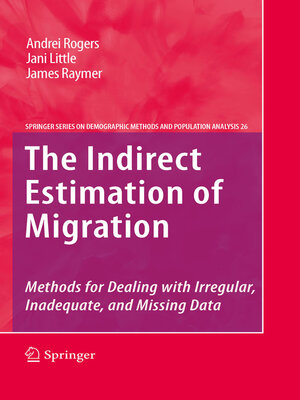The Indirect Estimation of Migration
ebook ∣ Methods for Dealing with Irregular, Inadequate, and Missing Data · The Springer Series on Demographic Methods and Population Analysis
By Andrei Rogers

Sign up to save your library
With an OverDrive account, you can save your favorite libraries for at-a-glance information about availability. Find out more about OverDrive accounts.
Find this title in Libby, the library reading app by OverDrive.



Search for a digital library with this title
Title found at these libraries:
| Library Name | Distance |
|---|---|
| Loading... |
This book presents the culmination of our collaborative research, going back over 15 years (Rogers & Little, 1994), and for one of us, even longer (Rogers, 1967, 1973). It addresses a dif?cult, yet necessary, area of demographic research: what to do in data situations characterized by irregular, inadequate, or missing data. A common solution within the demographic community has been what is generally referred to as "indirect estimation". In our work the focus has been on the indirect estimation of migration, and our use of the term "indirect" follows the description given in the 1983 United Nations manual, which de?ned it as "techniques suited for analysis of incomplete or defective demographic data" (United Nations, 1983, p. 1). We wrote this book with a goal to make it accessible to a reader familiar with introductory statistical modeling, at the level of regression and categorical data an- ysis using log – linear models. It is primarily intended to serve as a reference work for demographers, sociologists, geographers, economists, and regional planners.







